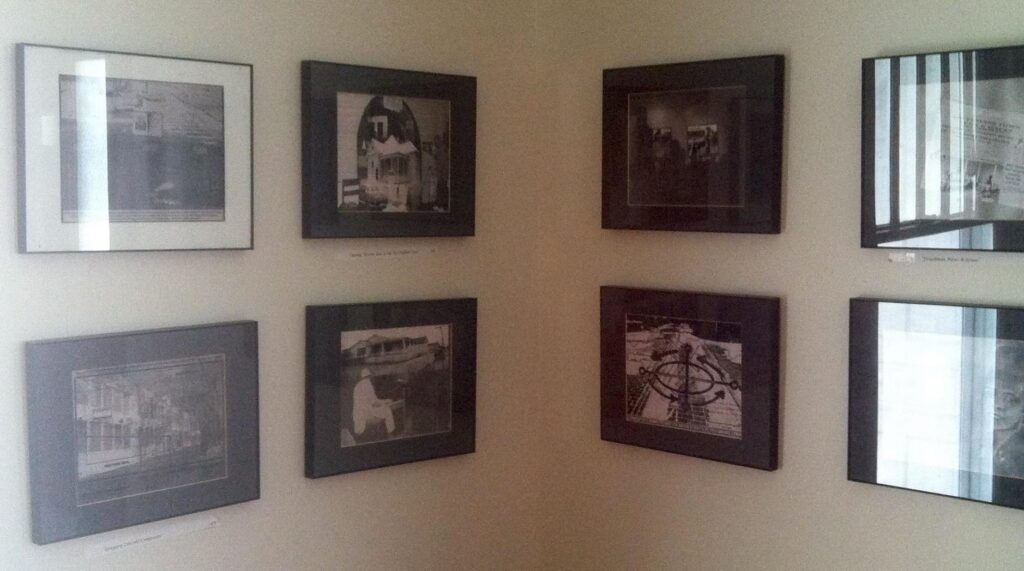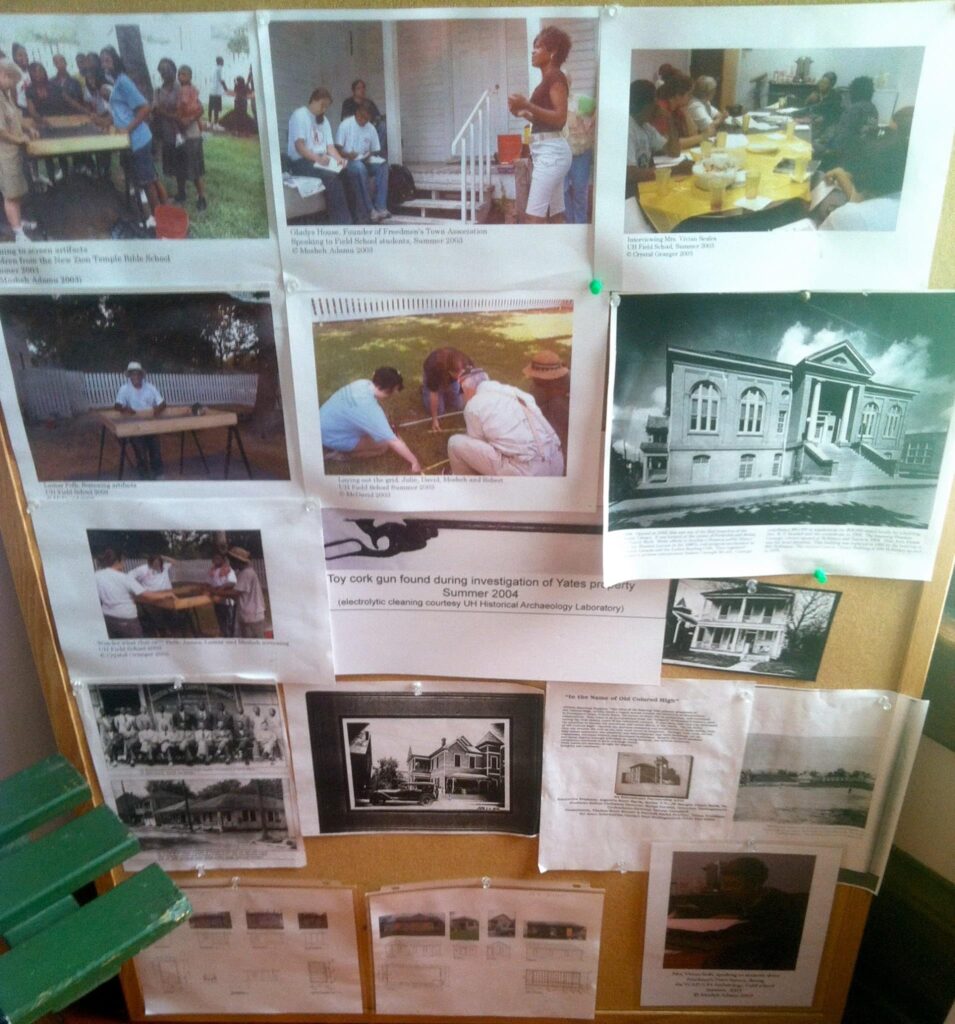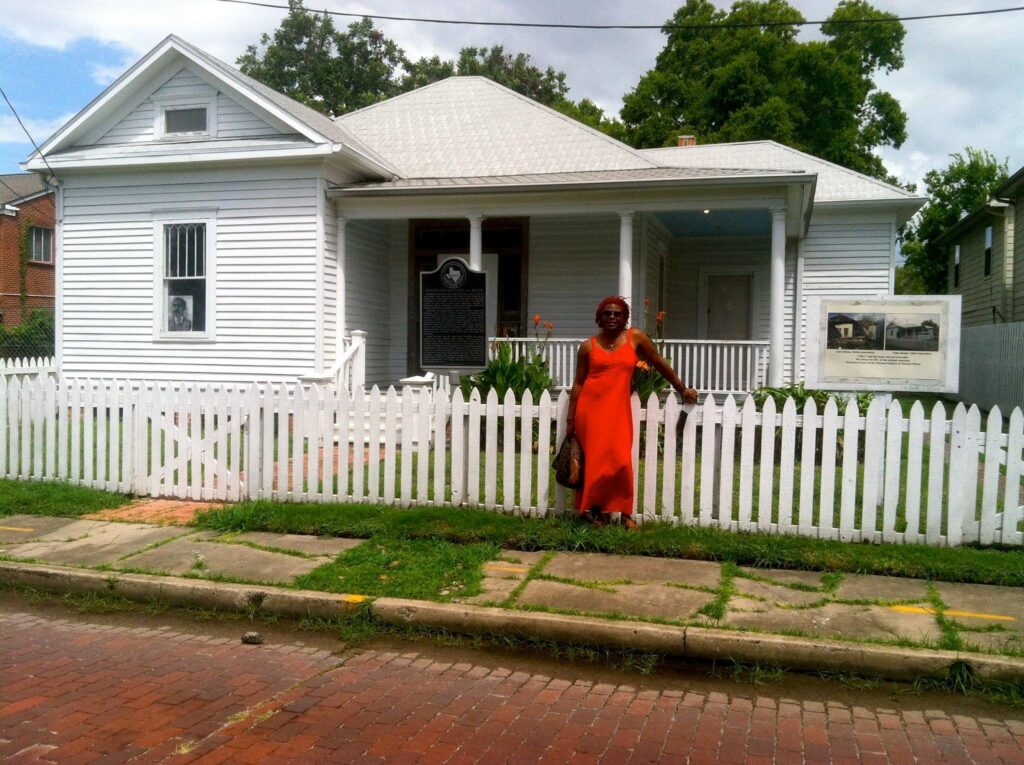In essence a museum is an institution, building or place that houses historical and cultural artifacts as well as natural specimens of animals, plant and fungi for the purpose of display for visitors who wish to learn and/or enjoy the aesthetics of the items that are exhibited. I’ve had the experience and the pleasure of being a field tech archaeologist and a contributing artist as well as an ethnographer at a museum. From 2001-2004 and to some degree well after into 2005, I served in many capacities to the Rutherford B.H. Yates Museum in Houston, TX. However, my involvement with the historic Freedman’s Town community of Houston, TX begin in 1996 when I witnessed U.S. Marshals physically remove residents from Allen Parkway Village after they were legally evicted in order for their homes to be demolished and a new low-income housing development built in its space. Months later, human remains were discovered by the construction workers thus temporarily halting construction. 1997 was the year I became an archaeologist. Though I was working on other sites in the Deep South, I kept an eye on happenings in Freedman’s Town which resulted in me being invited and hired as a team member archaeologist for the Rutherford B.H. Yates Museum who had acquired several properties in Freedman’s Town solely for the purpose of preservation, research and restoration.
I was only there for the initial field school, so I don’t know much about what was discovered thereafter but I do remember excavation taking place in the backyard… urban/community archaeology. Yet my role as an archaeologist was minimal in comparison to my work collecting ethnographic data by interviewing several of the elder community members who shared many narratives with me about the lives of African Americans in Houston, TX prior to and shortly after Emancipation. In addition to transcribing the interviews, as a photographer and digital media artist I created a series of images that are still in the possession and on display at the Rutherford B.H. Yates Museum today. Some of the images I created examined the historic brick streets, churches and historical figures of Freedman’s Town. As I was saying my work didn’t end with anthropology, I went on to build the museum’s first website and managed it for a year or so before another graphic designer replaced me. Rutherford B.H. Yates Museum in Freedman’s Town really was sort of a three-field anthropology (archaeology, cultural and biological) playground for me in which I am much grateful for the experiences, knowledge and opportunities it afforded me. In 2014, I was able to visit some of friends and colleagues at the museum and was happy to still see my artwork on display.
However, that has nothing to do with what I really want to talk about in this post. In the reading “Chapter 3 Natural History and Anthropology Museums” of Museums in Motion, I could not help but consider the number of stolen artifacts that compromised the early museum collections. Got me thinking about an article I read in the Associated Press a while ago regarding the British Museum returning the Rosetta Stone back to Egypt. Published on November 30, 2022 this article titled, “Egyptians Call on British Museum to Return the Rosetta Stone,” speaks to a request by modern Egyptians to have their artifacts of historical cultural heritage to be returned to them. In searching for this article to share with you, I looked for more recent articles that followed-up in hopes that I would read, “British Museum Returns Rosetta Stone” or “British Museum Response to Egyptian Request to Return Rosetta Stone with Hell Nawl.” Yet, I found no updated articles. If you see one out there on the internet, please share the link with me.
So, then I was talking to my wife this morning about the use of the word, “mummy” after reading this article by Leading Britain’s Conversation (LBC) titled, “The term mummy is ‘dehumanising’ and should no longer be used, museum says in bid to protect ancient Egyptians,”. Adam Solomons, the author of this article states that both the British Museum and the National Museums Scotland are no longer using the word “mummy” rather “mummified person” in an effort to respect the remains as humans and not objects. So now, I’m like if the British museum cares about humanizing the ancestors they should be okay with honoring the living and return the Rosetta Stone along with countless of other stolen artifacts but then I was like no way… that will never happen. Stolen artifacts as a result of colonialism brings the British Museum way too much money, to fathom giving up. If the British Museum returned the plundered artifacts, they wouldn’t have anything to exhibit. They would go from being categorized as a world class museum to be defined as a shabby cabinet of wonder.
Is the British Museum really going to give back such a significant artifact as the Rosetta Stone or continue to cite the “lawfulness” of colonialism is a question, but an even larger question is how seriously are museums taking repatriation of historical-cultural artifacts in the 21st century?



I agree with you. The British Museum is never going to give up their main draws, as they are far too lucrative to the museum. I have to also wonder, though, if it might not be a good thing? No, it wasn’t fair that it was stolen a century ago, but how accessible is Egypt vs. Britain to many people? Not to mention that the islands of the UK are far more peaceful. I wish there were a way for this conflict to have a happy medium – Egypt gets the original back with the British Museum having a replica – but the original piece is what most people come to see.
One of the major problems I see when discussing repatriation of artifacts to their country of origin, is that it creates an us vs them dynamic between museums. There is virtually no room for compromise or discussion in these debates, and I feel like questions of ownership or pride get in the way of considering how these artifacts can best help us understand the past. To truly move beyond the impacts of colonialism, we need to look not just at repatriation of artifacts, but also how different cultures can work together to bring the stories and history of these artifacts and their cultures of origin to people around the world. as long as we are focused on having the best artifacts, we are falling back into the failures of the past, rather than trying to improve and change the ways we interact with these cultures for the better.
Great discussion and thanks so much MoHagani for raising this issue of “ownership” of cultural heritage. The British Museum will come up many times in our discussions, readings, and media clips – as one of the largest museums in the world they of course have major ties to colonial expansion and the seizure of materials from other cultures. I’m glad we are thinking critically about the power of objects and the meaning of possession.
Amy’s suggestion to return the originals and place a copy with the museum is one that comes up a lot these days and hopefully we’ll have more discussions about this when we talk about NAGPRA in Module 4!